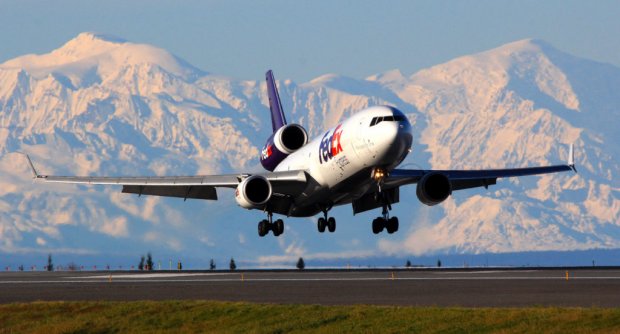Pittsburgh, Anchorage Airports Boost Cargo Connection

Pittsburgh International Airport is expected to sign an agreement to expand its collaboration with another airport – 4,000 miles away in Alaska.
The agreement, with Ted Stevens Anchorage International, will boost sales and marketing efforts at both airports, with a particular emphasis on cargo.
Anchorage ranked as the sixth busiest cargo airport in the world last year, according to Airports Council International, with more than 2.7 million metric tons of cargo passing through. ANC, which serves 28 widebody air cargo carriers, trails only Hong Kong, Memphis, Shanghai, Seoul, Louisville among cargo hubs.
“Cargo has been an increasingly important aspect of our operations, including during the pandemic,” said Bryan Dietz, vice president of Air Service Development at PIT. “It makes sense for us to partner with one of the busiest cargo airports in the world as we continue to sell Pittsburgh as a convenient – and speedy – cargo destination.”
Cargo has become a bigger part of Pittsburgh International Airport’s business plan as officials look to build the airport into an international logistics center, capitalizing on its abundant space and ideal geographic location. That has continued during the COVID-19 pandemic, even as passenger service has plummeted.
National Airlines landed five FEMA charter flights at PIT during the past two months carrying critical medical supplies from South Korea, some of which stopped in Anchorage for fuel. Qatar Airways Cargo served PIT for two years with twice weekly international freighter service until suspending the operation in December amid weakening global cargo demand stemming from international trade tensions.
ANC is served by nearly 50 air carriers and is the 5th largest airport in the world in terms of cargo throughput. (Photo courtesy of ANC)
Plans to further cargo expansion at PIT received a major boost in the fall when the U.S. Department of Transportation announced an $18.69 million BUILD grant to support the construction of a 75,000-square-foot cargo processing facility and an adjacent surface parking lot to expand air cargo operations.
“A potential benefit may ultimately be the attraction of new cargo air services at each airport if PIT and ANC coordinate to jointly market to air carriers who then see value in linking the two airports. Then, obviously, there are the benefits of learning best practices in air cargo to increase efficiencies, lower costs and improve overall operations,” said Doug Banez, managing director of Hubpoint Strategic Advisors.
“I think PIT’s long-term prospect for securing regular international freighter service is likely greater than those of many U.S. airports because PIT has shown a sustained interest in growing and investing in their air cargo business and because each incremental experience with air cargo operators will move PIT further along the learning curve of what may or may not succeed at the airport. Even if there are set backs along the way, there is value in what is learned in the process. As with anything that’s worthwhile, there will be challenges and risk, but as long as that risk is calculated and based on proper due diligence, it can be viewed as a positive long-term objective.”
Anchorage, which averages about 110 widebody aircraft landings a day, is different in that the airport isn’t really competing with others, said Trudy Wassel, deputy airport manager at Anchorage. Airlines from Asia stop for fuel at Anchorage en route to other destinations in North America, she said.
“It’s the payload equation – they can take more cargo and less fuel – and bring the goods to North America by landing in Anchorage; getting gas and going on to the different airports – Chicago, DFW, Miami, JFK, Pittsburgh – and then using those airports to distribute the goods by rail or truck or smaller aircraft,” said Wassel, a Western Pennsylvania native. “We’re working together to market our airports, kind of for different reasons, but the end goal is to increase the supply chain distribution to North America.”
The agreement, which does not carry any cost, outlines several areas airport officials plan to work together including cooperative marketing, exploring operational efficiencies, sharing knowledge and expertise, and, eventually, exploring nonstop passenger service from Asia.
“Besides growing the supply chain, it’s the collaboration between airports. It makes sense for them to work together when they talk to airlines. We’ve been doing that on the passenger end for quite a few years,” Wassel said “Doing that collaboration together reinforces the possibility for new routes, new carriers.”


